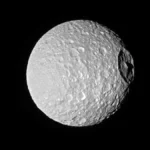
Apollo 13 is one of the most dramatic and well-known missions in the history of space exploration. Launched on April 11, 1970, what began as the third planned lunar landing quickly turned into a harrowing struggle for survival after an oxygen tank explosion crippled the spacecraft. The mission’s challenges and the crew’s resilience captivated the world, leading to numerous lessons that improved the safety of future space missions. Here are 25 detailed facts about this remarkable journey.
Launch Date: Apollo 13 lifted off on April 11, 1970, at 2:13 PM EDT from Kennedy Space Center in Florida. The mission was the seventh crewed mission in the Apollo program and aimed for a lunar landing, specifically targeting the Fra Mauro formation. The Saturn V rocket used for the launch was the most powerful rocket ever built, designed to carry the Apollo spacecraft into space. The lift-off was smooth, with no initial signs of the troubles that would later arise. This launch was watched by millions around the world, as the space race and lunar missions were of significant public interest and pride.
Crew: The crew of Apollo 13 consisted of James Lovell (Commander), John Swigert (Command Module Pilot), and Fred Haise (Lunar Module Pilot). James Lovell was a veteran astronaut, having flown on Gemini 7, Gemini 12, and Apollo 8, the first mission to orbit the Moon. John Swigert was a last-minute replacement for Ken Mattingly, who was grounded due to exposure to German measles. Fred Haise, like Swigert, was on his first spaceflight. Despite the challenges, the crew’s professionalism and calm demeanor under pressure were crucial to their survival and the mission’s eventual outcome.
Explosion: At 55 hours, 54 minutes into the mission, an oxygen tank in the Service Module ruptured, causing a loud bang and shaking the spacecraft. The explosion crippled the spacecraft, leading to the loss of most electrical power and the failure of the propulsion systems. The incident occurred while the crew was conducting a routine stirring of the oxygen tanks, a procedure meant to prevent the oxygen from stratifying. The rupture’s immediate consequence was the venting of oxygen into space, which quickly led to the depletion of the spacecraft’s oxygen supply, making a lunar landing impossible and turning the mission into a struggle for survival.
Lost Power: The explosion resulted in the loss of most of Apollo 13’s electrical power and propulsion systems. The spacecraft’s primary fuel cells, which generated electricity by combining hydrogen and oxygen, were rendered inoperative. This sudden power loss forced the crew to shut down the Command Module (CM) “Odyssey” to conserve the remaining battery power needed for re-entry. The crew transferred to the Lunar Module (LM) “Aquarius,” designed to support two astronauts for two days but now needed to sustain three astronauts for four days. This scenario tested the limits of the spacecraft’s life-support capabilities.
Limited Resources: With the Command Module’s systems offline, the crew relied on the Lunar Module “Aquarius” for life support, which had limited water, power, and oxygen supplies. Designed only for short lunar surface excursions, the LM’s resources were stretched to the brink. Water was strictly rationed to about 16 ounces per astronaut per day, and power consumption was minimized by turning off all non-essential systems. Oxygen from the LM’s tanks was conserved as much as possible, with the crew facing cold temperatures and the growing challenge of removing carbon dioxide from their confined environment.
Course Correction: To ensure a safe return to Earth, Apollo 13 required 14 mid-course corrections using the LM’s descent engine, a record for a single spacecraft. These maneuvers were critical to adjusting the spacecraft’s trajectory after the initial explosion had altered their planned path. The descent engine, intended for controlled lunar landings, was now repurposed for delicate navigational adjustments. These course corrections demanded precise calculations and careful execution under manual control, highlighting the crew’s ingenuity and NASA’s ground support in navigating the damaged spacecraft back to Earth.
Cold Cabin: With the Command Module powered down to save energy, temperatures inside the spacecraft dropped to a frigid 50°F (10°C). The crew had to endure these uncomfortable conditions for the duration of the return trip. The cold made it difficult to sleep and increased the risk of hypothermia and other health issues. The lack of heat also caused condensation to form on the walls of the spacecraft, posing additional risks with electrical equipment. The astronauts wore extra clothing and huddled together to stay warm, but the cold remained a persistent and grueling challenge.
CO2 Scrub: The crew devised a makeshift CO2 scrubber using plastic bags, tape, and cardboard from lunar experiment packaging to deal with rising carbon dioxide levels. The LM’s life-support system was not designed to accommodate three astronauts for an extended period, leading to a dangerous build-up of CO2. NASA engineers on the ground rapidly developed a solution using available materials, which the astronauts successfully assembled. This improvised scrubber effectively removed CO2 from the air, preventing potentially fatal poisoning and illustrating the ingenuity and resourcefulness of both the crew and ground support teams.
“Houston, We Have a Problem”: This iconic phrase, though not spoken verbatim, originated from Swigert’s report of the oxygen tank issue: “Okay, Houston, we’ve had a problem here.” Lovell repeated it, “Houston, we’ve had a problem,” which quickly became a symbol of the mission’s crisis. This calm but urgent communication signaled the beginning of Apollo 13’s emergency situation. The phrase has since become synonymous with unforeseen challenges and the human ability to confront and overcome adversity. The clarity and professionalism in their communication helped ground control understand the severity of the situation and formulate a response.
“Abort Everything” Switch: A switch labeled “Abort Everything” existed on the Command Module, designed to automatically trigger a lunar landing abort if activated. This feature was intended as a safeguard during the lunar descent phase, enabling the crew to quickly abandon the landing attempt and return to lunar orbit in case of an emergency. Although never used during the Apollo 13 mission, its presence underscores the extensive planning and risk management inherent in lunar missions. The switch’s purpose was to ensure the crew’s safety by providing a quick escape option during the critical landing phase, highlighting NASA’s commitment to astronaut safety.
Water Rationing: The crew of Apollo 13 had to strictly ration their water consumption due to the limited supply available in the Lunar Module. Each astronaut consumed as little as 16 ounces (473 ml) per day, far below the typical daily intake needed for survival. Water was not only essential for drinking but also for rehydrating food and cooling equipment. The rationing led to significant dehydration and discomfort, but it was a necessary measure to ensure that they had enough water to last the remainder of the mission. This rationing highlighted the severity of the situation and the crew’s discipline and endurance under extreme conditions.
“Lovellian Shortcut”: Commander James Lovell devised a navigation technique, later dubbed the “Lovellian Shortcut,” using the stars and the Lunar Module’s computer to refine their course back to Earth. With the primary navigation systems compromised, Lovell used the position of the sun, moon, and stars to make critical adjustments. He manually aligned the spacecraft using the LM’s optical sighting system, a procedure that required immense skill and precision. This method helped correct their trajectory and ensured that they would re-enter Earth’s atmosphere at the correct angle, avoiding the risk of skipping off into space or burning up upon re-entry.
Distance Traveled: Despite the mission’s focus on the Moon, Apollo 13 traveled a total of 248,655 miles (399,740 km) during its journey. This distance includes the trip to the moon, the journey around the moon, and the return to Earth. Although the crew did not land on the lunar surface, they achieved a close approach of 130 miles (209 km) from it. This vast distance traveled underscored the magnitude of the mission and the challenges faced in bringing the crew safely back to Earth. The journey’s length also emphasized the isolation and vulnerability of the astronauts as they navigated through space.
Re-entry Speed: Upon re-entry, Apollo 13 reached a scorching speed of 25,000 mph (40,000 km/h). This high velocity was necessary to ensure that the spacecraft could overcome Earth’s gravitational pull and safely enter the atmosphere. The intense speed resulted in extreme heat due to atmospheric friction, necessitating a robust heat shield to protect the Command Module and its occupants. The re-entry process required precise calculations and timing to ensure the correct trajectory and angle of descent. Successful re-entry was a critical final hurdle for the mission, culminating in the safe splashdown of the Command Module.
Splashdown: The crippled spacecraft splashed down in the South Pacific Ocean on April 17, 1970, at 4:17 PM EDT. This marked the end of a harrowing journey that lasted 142 hours and 54 minutes. The splashdown was located near American Samoa, and recovery forces were already in position to quickly retrieve the crew. The safe return of Apollo 13 was met with widespread relief and celebration, as the world had closely followed the astronauts’ struggle for survival. The successful splashdown and recovery of the crew underscored the effectiveness of NASA’s contingency planning and the resilience of the astronauts.
Recovery: After splashing down, the crew of Apollo 13 was recovered by the aircraft carrier USS Iwo Jima. The recovery operation was swift and efficient, with helicopters dispatched from the carrier to retrieve the astronauts from the Command Module floating in the ocean. The crew was brought aboard the carrier, where they underwent medical examinations and debriefings. The recovery marked the successful conclusion of the mission and the astronauts’ safe return to Earth. The professionalism and preparedness of the recovery team were crucial in ensuring that the crew was quickly and safely brought back to solid ground.
Mission Cost: The total cost of the Apollo 13 mission, including development and launch, was estimated at $400 million, which is approximately $2.9 billion in 2024 dollars. This cost encompassed the design, construction, and testing of the spacecraft and rockets, as well as the training and support of the astronauts and mission control personnel. Despite the mission’s failure to land on the Moon, the investment in technology and expertise provided invaluable lessons and advancements in space exploration. The cost also highlighted the significant financial commitment required for human spaceflight and the importance of rigorous planning and risk management.
Closest Approach to Moon: Despite the aborted landing, Apollo 13 reached a distance of 130 miles (209 km) from the lunar surface. This closest approach occurred during the spacecraft’s slingshot maneuver around the Moon, which was necessary to set it on a return trajectory to Earth. Although the crew did not achieve their goal of landing, this proximity provided valuable data and confirmed the accuracy of their navigation. The close approach also symbolized the mission’s near success and the thin line between triumph and disaster in space exploration.
“Houston, We’ve Got a Problem” Movie: The Tom Hanks-starring film “Apollo 13,” released in 1995, grossed over $354 million worldwide. Directed by Ron Howard, the movie dramatized the harrowing events of the Apollo 13 mission, highlighting the astronauts’ courage and the ingenuity of the NASA team. The film brought widespread public attention to the story, showcasing the real-life drama and technical challenges faced by the crew. It received critical acclaim and several Academy Award nominations, solidifying its place as a classic in space exploration cinema. The movie’s success helped preserve the legacy of Apollo 13 and inspired future generations of scientists and engineers.
Swigert’s Illness: John Swigert, the Command Module Pilot, had contracted hay fever before the launch, unbeknownst to NASA. This condition complicated his role during the crisis, as it caused discomfort and potential distractions. Despite this, Swigert performed his duties with professionalism and contributed significantly to the crew’s survival. His ability to remain focused and execute critical tasks under physical strain highlighted the resilience and determination of the astronauts. This detail underscores the human challenges faced during space missions, where even minor health issues can become significant under the extreme conditions of space travel.
Power Up for Re-entry: A crucial maneuver involved powering up the Command Module (CM) for re-entry using the remaining battery power in the Lunar Module (LM). This operation was risky because the CM had been shut down to conserve power, and reactivating its systems required careful coordination and precise timing. The process involved transferring power from the LM to the CM, a procedure not originally designed for such a contingency. Despite the challenges, the astronauts successfully managed this power-up, ensuring that the CM had enough energy for critical re-entry functions, such as navigation, communication, and control. This maneuver was essential for the safe return of Apollo 13, highlighting the crew’s technical skill and the ground team’s ingenuity.
“Odyssey Can Hear You” Message: Following the explosion, communication with the spacecraft was severely compromised, leading to periods of silence that worried mission control and the public. Ground controllers finally established weak communication with the crew and sent the now-famous message, “Odyssey can hear you.” This phrase marked a turning point in the crisis, as it reassured everyone that contact had been reestablished and that the crew was still able to receive instructions. The ability to communicate was critical for coordinating the complex maneuvers and troubleshooting needed to bring Apollo 13 home safely. This message underscored the importance of maintaining communication links during space missions, especially during emergencies.
Public Interest: The Apollo 13 crisis captivated the world, with millions of people glued to news reports following the crew’s struggle for survival. The mission quickly became a global story, highlighting the human drama and technical challenges faced by the astronauts and the NASA team. The public’s fascination was fueled by the high stakes and the real-time updates provided by the media. People from all walks of life expressed their support and concern, and the successful resolution of the crisis was met with widespread relief and celebration. The intense public interest demonstrated the universal appeal of space exploration and the shared human experience of overcoming adversity.
Lessons Learned: The near-disaster of Apollo 13 forced NASA to develop improved procedures and life support systems for future space missions. The mission highlighted the importance of rigorous testing, redundancy, and contingency planning. In response, NASA implemented several changes, including better oxygen tank design, enhanced crew training for emergency scenarios, and more robust communication protocols. The lessons learned from Apollo 13 also influenced the design of the Space Shuttle and later space exploration missions, contributing to the overall safety and success of human spaceflight. The incident underscored the need for continuous improvement and adaptability in the face of unforeseen challenges.
Crew Honors: The Apollo 13 crew received the Presidential Medal of Freedom, the nation’s highest civilian honor, for their courage and heroism. This award recognized their exceptional bravery and composure under extreme conditions, as well as their successful collaboration with the ground team to overcome seemingly insurmountable obstacles. The medal was presented to James Lovell, John Swigert, and Fred Haise by President Richard Nixon in a ceremony that celebrated their achievement and highlighted the broader contributions of the Apollo program. This honor underscored the crew’s role in one of the most dramatic and inspiring episodes in the history of space exploration, cementing their legacy as heroes of human ingenuity and perseverance.
Frequently Asked Questions about Apollo 13:
- What exactly happened on Apollo 13?
Apollo 13 was supposed to be a lunar landing mission, but disaster struck when an oxygen tank exploded 55 hours into the flight. This crippled the spacecraft, causing loss of power, propulsion, and depleting vital oxygen supplies. The crew had to abandon the main spacecraft and take refuge in the Lunar Module (LM), designed for lunar descent and much smaller. With limited resources and freezing temperatures, they faced a harrowing journey back to Earth, relying on ingenuity and the tireless efforts of mission control to make critical course corrections and devise solutions for life support challenges.
- Did they ever land on the Moon?
No, the Apollo 13 mission never landed on the Moon. After the oxygen tank explosion, the focus shifted entirely to ensuring the crew’s safe return. They used the Lunar Module’s descent engine for multiple course corrections, a record for a single spacecraft, and aimed for a slingshot maneuver around the Moon’s gravity to propel them back towards Earth. Although they didn’t land, they did come within 130 miles (209 km) of the lunar surface.
- Is the famous line “Houston, we have a problem” real?
While the movie popularized the phrase “Houston, we have a problem,” the actual communication wasn’t quite so dramatic. Astronaut Jack Swigert reported the issue with the oxygen tank saying, “Okay, Houston, we’ve had a problem here.” This calm and concise message effectively conveyed the seriousness of the situation and became an iconic moment in spaceflight history.
- How did they survive with limited resources?
The crew’s survival hinged on a combination of resourcefulness and the support of mission control. They strictly rationed water, devised a makeshift CO2 scrubber using spare materials onboard, and endured frigid temperatures in the unpowered Command Module. Mission control on Earth played a crucial role by guiding them through critical maneuvers and procedures to conserve resources and plot a safe return trajectory.
- What was the impact of the Apollo 13 mission?
Although not the successful Moon landing it was intended to be, Apollo 13 became a testament to human courage, ingenuity, and the power of collaboration. The near-disaster forced NASA to re-evaluate procedures and life support systems for future missions. The crew’s bravery and the successful rescue captivated the world, highlighting the importance of space exploration and human resilience in the face of adversity.









